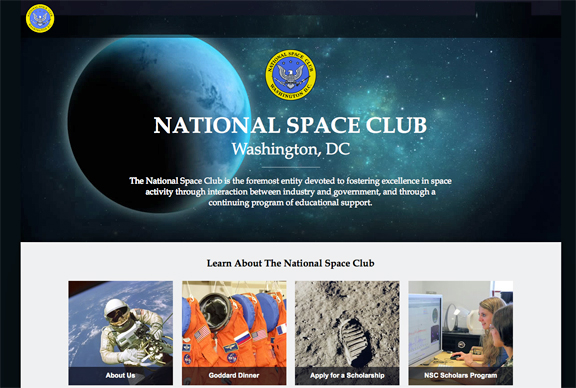
[SatNews] The National Space Club is pleased to announce its Annual Award Recipients.
The Awards are selected by panels of experts from across the aerospace and defense industry, government, and academia, and are a testament to the inspiring work of individuals across the United States. The Awards will be presented at the 58th Annual Robert H. Goddard Memorial Dinner, taking place at the Washington Hilton on Friday, March 13, 2015.
The recipients are:
- Dr. Harold Rosen will receive the Club's preeminent award, the Dr. Robert H. Goddard Memorial Trophy. Dr. Harold Rosen is a founder of the modern communications satellite industry, and is widely known for his leading role in the development of Syncom, the world's first geosynchronous communications satellite. Dr. Rosen's groundbreaking work in communications technology began in 1959 with his concept of a small, controllable spin-stabilized satellite. He led the team that developed a prototype geostationary satellite funded by the then Hughes Aircraft Company, now Boeing Satellites. Successfully launched by NASA in 1963, President Kennedy made the first satellite telephone call by a head of state; and the first television signals were transmitted by that satellite. These accomplishments led to the present success of the commercial satellite industry which has connected the global community with broad band communications.
- Marchelle Diane Canright, Senior Advisor to the Associate and Deputy Associate Administrator for Education, NASA, will receive the Space Educator Award. Ms. Canright is recognized for her career as an award winning space science education, manager, administrator, and innovator providing the NASA Education enterprise with leadership in the areas of advanced educational technology, program design, evaluation, and outcome-based leadership.
- Marcia Dunn, Journalist, Associated Press (AP), will receive the Press Award for her work covering the space beat for the AP for nearly a quarter-century. In total, she covered and witnessed 99 space shuttle flights through the final mission, STS-135, in July 2011. In 2003, her coverage of the Columbia tragedy was recognized by AP with top honors for deadline reporting. More recently, Dunn was selected as a Knight Science Journalism fellow at the Massachusetts Institute of Technology and is featured in one of the Sally Ride Science series of career books for students, "Cool Careers in Space Sciences."
- Mary Johnson, Program Manager, Space Systems Program Office, National Reconnaissance Office, will receive the Dr. Joseph V. Charyk Award. She is recognized for leading a congressionally-directed, more than 450-million-dollar firm-fixed price acquisition from design through production and transition to operations; delivering a cost-effective, operationally responsive asset to United States and allied intelligence users worldwide.
- Dr. Michael Pavolonis, Physical Scientist, NOAA/NESDIS, will receive the NOAA - David Johnson Award for developing cutting-edge methods to convert satellite data into actionable information for mitigating hazards caused by volcanic eruptions and severe convection. These new remote sensing techniques improve the timeliness and accuracy of volcanic ash cloud advisories and severe weather warnings.
- Christopher Singer, Engineering Directorate, NASA George C. Marshall Space Flight Center, will receive the Astronautics Engineer Award for his 32 years of engineering leadership in keeping America's space programs and missions preeminent in the world. He is NASA Marshall's primary technical authority and has personally contributed his leadership to the Space Shuttle; External Tank Redesign; the Space Launch System; the Dream Chaser spacecraft (Sierra Nevada); Space X; Loral; Orbital Sciences; Mighty Eagle lander; and the Orion programs.
- The NASA Lunar Laser Communications Demonstration (LLCD), will receive the Nelson B. Jackson Award, for their record-breaking achievement using broadband lasers for space communications. Using a pulsed laser beam to communicate and exchange data and high definition video with the main LLCD ground station in White Sands, New Mexico, the team achieved rates over six times higher than previous missions. LLCD was also able to assist the host mission (Lunar Atmosphere and Dust Environment Explorer, "LADEE") with a download of a 1-gigabyte data set in only a few minutes. The team is comprised of members from the NASA Goddard Space Flight Center and the Massachusetts Institute of Technology's Lincoln Laboratory.
Individuals and organizations interested in attending the 58th Annual Robert H. Goddard Memorial Dinner on Friday, March 13, 2015 at the Washington Hilton, may find more information on our website http://www.spaceclub.org/.

